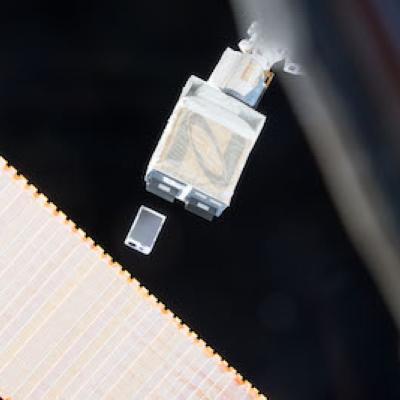Searching For Small Planets With a Tiny Telescope: The Story of ASTERIA
The study of exoplanets, planets around other stars, has exploded since the discovery of the first exoplanet orbiting a Sun-like star in 1995.
Telescopes in space and on the ground have discovered thousands of weird and wonderful worlds and we have learned that exoplanets are both numerous and varied. One of the long-standing goals of the exoplanet community has been to find planets like our own Earth – small rocky planets orbiting in the habitable zone of Sun-like stars. Detecting these Earth twins has proven difficult since many years of extremely sensitive observations are required for a conclusive detection.
In this talk, I will describe a small space telescope, ASTERIA, which was designed to address the difficulty of detecting Earth-sized planets orbiting Sun-like stars. ASTERIA is a 6U CubeSat developed by MIT and NASA JPL to demonstrate high precision photometry in a small package. I will tell ASTERIA’s ‘life story’ from design and development through launch, operations, and science results. Finally, I will summarize ASTERIA’s ongoing mission and potential follow-ons.
Technical Talk: Radio Emission From Exoplanetary Magnetospheres: Current Status and Future Directions
A wide variety of exoplanet characterization techniques have been developed in the past two decades of the ‘exoplanet era’. Atmospheric composition, structure, and weather patterns can now be measured for select planets, along with bulk properties like mass, radius, and density. Interior structure and composition of exoplanets, however, has remained difficult to study due to degeneracies in inferring interior structure from bulk density. The existence (or absence) of exoplanetary magnetic fields offers one possible means for breaking degeneracies in exoplanet interior modeling.
In this talk, I will discuss the observational signatures for exoplanetary magnetic fields with an emphasis on low frequency radio emission. Solar system planets with strong magnetic fields all exhibit bright, coherent radio emission at or near the local electron cyclotron frequency in their ionospheres via the electron cyclotron maser instability. Searches for similar radio signatures from exoplanets began even before the first confirmed detection of an extrasolar planet. I will describe past and present efforts to detect radio emission from exoplanetary magnetospheres as well as current challenges and future opportunities. Finally, I will briefly introduce a CubeSat mission that will demonstrate a novel antenna technology, the low frequency vector sensor, which is a pathfinder for future large in-space interferometric radio telescopes.
